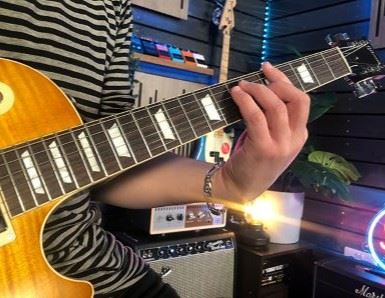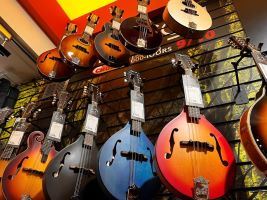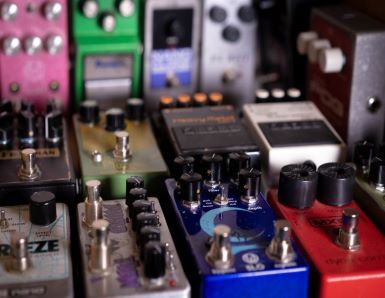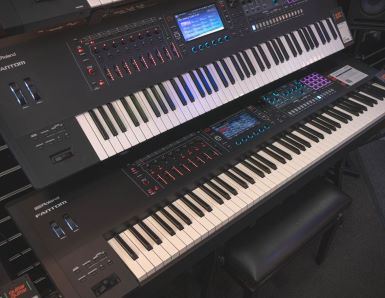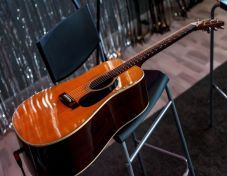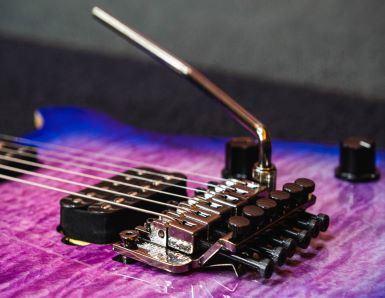What Are Power Chords and How Can We Use Them?
Disclaimer: The information in this article is provided by the guest blogger and does not necessarily reflect the views and opinions of guitarguitar.
As a guitarist, you are bound to come across the term "power chords." These are the simplest types of chords possible in terms of structure and construction, but you will see how versatile and interesting power chords can become when applied in conjunction with other basic musical concepts.
Let's start with the very basics.
What Are Power Chords?
Power chords are two-note chords. They are constructed with only the root and the fifth. This type of chord is frequently utilised in rock, punk, and metal music. The note on which you want the chord to be based is known as the root note. Play the major scale from the root, and the fifth note will be the fifth (obviously). In other words, moving up seven semitones (frets on a guitar) from the root note will get you to the fifth.
Let’s take the C major scale. It has the notes (pitches) C, D, E, F, G, A, and B. Play the scale on your instrument first. Now the root is C, it is the first note. Counting down the notes, we get to the fifth note, which is G for C major scale. Then the power chord C5 will consist of notes C and G. I wrote the power chord on C as C5, which is the standard way of notating power chords.
Flavour of Power Chords
Conventionally, chords have three or more notes. Two of the most common and fundamental types of chords in western harmony are major and minor chords. These two types of chords sound different because they use different kinds of thirds. A third is the third note of a scale. Power chords do not fall into either of these two categories because they do not include any thirds. That makes power chords sound ambiguous, which is the purpose of using them.
How to Construct a Power Chord
Suppose you want to play a G5 chord. You will be required to play G (the root) and D (the fifth) together. Normally, these two notes will be played on two adjacent strings.
Here is a diagram of a G5 chord with root (G) played on the 6th string.

Take note that G is played twice, which is how a power chord is often played. If you leave out the G on the third string, it will still be a G5 chord.
Due to the different tuning of the third and second string, power chords look different when played with the root on fourth or third string.
Here is a diagram of E5 and A5 chords, with roots on fourth and third string respectively.
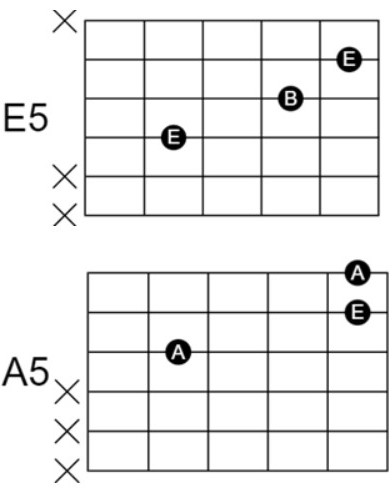
The strings that are crossed should not be played.
How to Practice Power Chords
Power chords are generally easier to hold and play. If you can play basic open chords, your hands are already strong enough for power chords.
Try to hold a power chord on any preferred string set, and make sure every fretted note sounds clean and there is no buzz coming from the fretted and muted strings. As the chord shape is moveable, move the shape around and listen to how it sounds.
You can take any chord progression you know and turn every chord into its power chord version. For example, a common chord progression in G is G major, E minor, C major, and D major. Instead of the major and minor versions of these chords, you can play this progression as G5, E5, C5, and D5. Like this, you can turn any chord progression into a power chord version.
As a practice, you can learn your favourite songs that utilise power chords. This way, you will be able to learn how to use them in your own playing.
One thing that makes the power chords challenging is muting the unwanted strings. For that, you can use the palm and fingers of your fretting hand on the strings that need to be muted. The most common way of achieving that is by placing the lower part of the first finger on the unwanted strings while fretting the root with the tip of that finger. This takes some time and practice to master. But don’t worry, you will be able to play it in no time.
How to Use Power Chords
From the discussion above, it should be clear that power chords can be played like any other chords. You can strum them (taking care of necessary string muting), play the notes one at a time like an arpeggio, or in any other way that fits the music. You can write a riff or even whole songs with power chords. But to make interesting and captivating songs, you might need to venture further into power chords.
With that in mind, here are two variations on power chords that would help you master them.
Inversion
In the diagram above, the root is always played on the lower string and the fifth on the next high string, the root is always played below the fifth. But you can invert them, and it will be the same chord. See the diagrams of the F5 chord below.
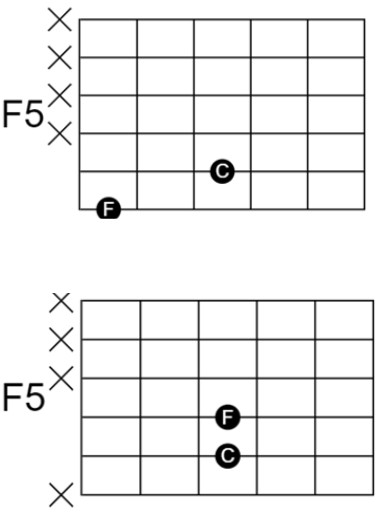
On the first diagram, the lowest note is F, which is the root note. And, on the second diagram, the lowest note is C, which is the fifth note. These are known as inversions of a chord. Using different inversions, you can keep your music always interesting.
Add an Extra Note
In modern music, it is quite common to add an extra note with the basic root-fifth. Most popular choice for that extra note is the 9th (also 2nd). 9th is the second note of a major scale, but one octave higher. This note adds amazing colour and personality to a power chord. These chords might require you to stretch your fingers quite a bit.
Take a look at the diagram of F5 with an added 9th. The 9th for F is the note G.
Note: G is the second note of F major scale, but played one octave higher.
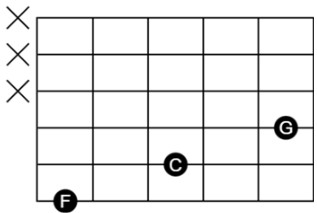
This chord shape sounds absolutely mesmerising, and I would urge you to practice and use it in your own way.
Songs For Practice
If you don’t know which songs to learn for your power chord mastery, you can start with the ones below that I would recommend to beginners. Some of these songs might pose a challenge to beginners, but deliberate and slow practice should do the trick.
- Smells Like Teen Spirit – Nirvana
- Enter Sandman – Metallica
- What I’ve Done – Linkin Park
- Seven Nation Army – The White Stripes
- American Idiot – Green Day
- Whole Lotta Love – Led Zeppelin
- Rock You Like A Hurricane – Scorpions
- Sweet Leaf – Black Sabbath
Final Words
Writing riffs with power chords requires a bit more knowledge than what I discussed, but all in all, it is a good way to dive into power chords. With time and experience, you will come up with many interesting and unique ideas on your own. Listening, learning songs, and researching great guitarists will give you a good amount of experience for that.
So, practice hard and make good music with these deceptively simple chords known as power chords.
Author: Bear Greenholtz
Bio: Bear is a guitar player and the founder of MusicRiser. He has also produced some of his own music and is an accomplished piano player.

